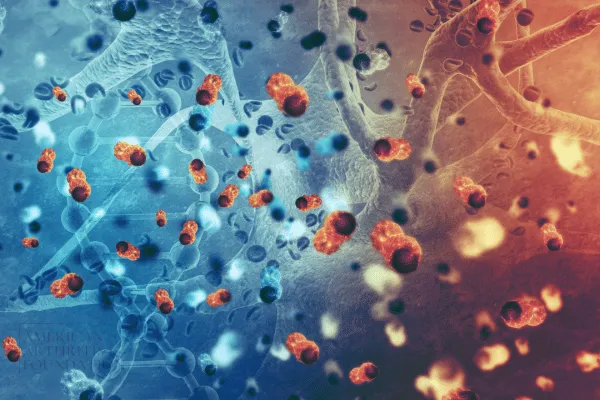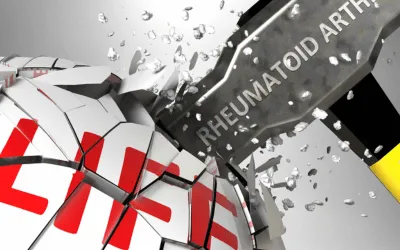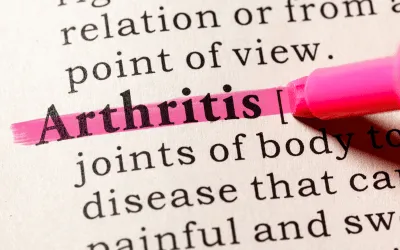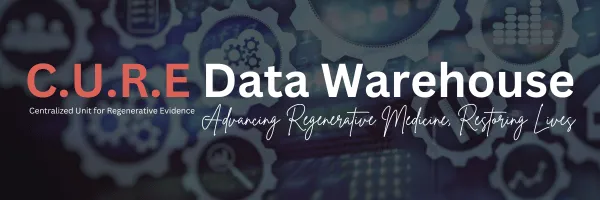About Arthritis
As the nation’s #1 cause of disability, arthritis affects nearly 60 million adults and 300,000 children. Over 100 types of arthritis and related conditions damage the joints and often other organs.
How can we assist you?
Helpful Tools for You

Hope, Healing, and Real-World Solutions for Modern Health Challenges
The Medical Revolution That's Finally Here
Twenty-five years ago, when scientists first isolated powerful stem cells from embryos, they promised a medical revolution. The idea was simple but revolutionary: what if we could create replacement parts for whatever ails you? What if your body could heal itself by growing new, healthy tissue?
For years, this remained more promise than reality. But today, something remarkable is happening. Stem cells are finally delivering on their potential. Patients with debilitating epilepsy are walking out of hospitals seizure-free. People with type 1 diabetes are putting away their insulin injections forever. And individuals with arthritis are getting their mobility back without surgery.
If you've been hearing about stem cell therapy and wondering whether it's real science or just hope, this guide will give you the facts you need to make informed decisions about your health.
What Are Stem Cells, Really?
Think of stem cells as your body's master repair kit. They're like blank cells that haven't decided what they want to be when they grow up. Unlike other cells that have specific jobs – like heart cells that beat or brain cells that think – stem cells can transform into almost any type of cell your body needs.
The Three Main Types of Stem Cells
1. Embryonic Stem Cells
The most powerful but also the most controversial
Can become any cell type in the human body
Used primarily in research, not direct treatment
2. Adult Stem Cells
Found in various tissues throughout your body
More limited in what they can become, but still very useful
Include bone marrow stem cells, fat-derived stem cells, and blood stem cells
3. Induced Pluripotent Stem Cells (iPSCs)
Adult cells that have been "reprogrammed" to act like embryonic stem cells
Created in the lab from your own cells
No ethical concerns and unlimited potential
The Science Behind the Success
Recent advances have solved the biggest challenges that held back stem cell therapy:
Problem 1: Making cells that actually work
Solution: Scientists have learned to create truly functional adult tissue from stem cells
Impact: Treatments now restore normal body function, not just provide temporary relief
Problem 2: Safety concerns
Solution: Better understanding of how to control stem cell behavior
Impact: Reduced risk of complications and unwanted side effects
Problem 3: Rejection by the immune system
Solution: Using patient's own cells or creating "universal" cells that don't trigger rejection
Impact: Treatments that last longer and work better
Real-World Applications That Are Changing Lives
Neurological Conditions: Rewiring Hope
Parkinson's Disease A novel neural stem cell therapy showed promising results in a phase 1 trial involving the transplantation of dopaminergic cells, which led to improved motor functions in patients, especially those receiving higher doses.
ALS (Lou Gehrig's Disease) Cedars-Sinai researchers reported that stem cells transplanted into the spinal cords of ALS patients continued to produce therapeutic proteins and showed signs of potential benefit for up to three-and-a-half years.
Stroke Recovery Significant improvements in clinical outcomes have been observed in stroke patients treated with allogeneic umbilical cord mesenchymal stem cells, with improvements in muscle strength, spasticity, and fine motor functions.
Eye Diseases: Restoring Sight
Age-Related Macular Degeneration (AMD) A study demonstrated the successful use of stem cell-derived retinal pigment epithelium patches to treat severe AMD. Patients receiving this treatment experienced improved vision, marking significant progress in regenerative medicine for eye diseases.
Heart Disease: Regenerating the Heart
Heart Failure Physician-scientists found that a subset of artificial heart patients can regenerate heart muscle, which may open the door to new ways to treat and perhaps someday cure heart failure.
Joint Pain and Arthritis: Moving Without Pain
This is where stem cell therapy is making perhaps the biggest immediate impact for older adults:
Osteoarthritis Treatment A trial conducted by Australian biotechnology company Magellan Stem Cells demonstrated that their 'off-the-shelf' stem cell therapy MAG200 significantly improved joint function and reduced pain for sufferers, with sustained benefits observed over longer periods.
Real Numbers: According to published research, stem cell therapy for knee arthritis results in 58-68% improvement in pain and 67-83% improvement in function one to two years after treatment.
How It Works: When stem cells are injected into an arthritic joint, they attach to areas of damaged tissue, sense the microenvironment of the injury, and determine what kind of cells to grow and what molecules are needed to enhance tissue healing.
The Space Connection: A Surprising Discovery
Here's something that sounds like science fiction but is absolutely real: Mayo Clinic researchers have found that stem cells grown in microgravity aboard the International Space Station have unique qualities that could help accelerate new biotherapies and heal complex disease.
Why this matters: Studying stem cells in space has uncovered cell mechanisms that would otherwise be undetected or unknown within the presence of normal gravity, indicating broader scientific value including potential clinical applications.
What This Means for You: Practical Applications
Conditions Being Treated Now
Joint Problems:
Osteoarthritis in knees, hips, shoulders
Tendon and ligament injuries
Meniscus tears
Cartilage defects
Pain Conditions:
Chronic back pain
Neck pain
Sciatica
Herniated discs
Other Applications:
Wound healing
Hair restoration
Skin rejuvenation
Immune system disorders
Who Is a Good Candidate?
You might be a good candidate if:
You have joint pain from osteoarthritis
Traditional treatments haven't provided adequate relief
You want to avoid or delay surgery
You're looking to restore damaged tissue, not just manage symptoms
You're in reasonably good health overall
You might not be a candidate if:
You're currently being treated for cancer
You have an active infection
You take high-dose blood thinners
You have multiple serious medical conditions
The Treatment Process: What to Expect
Common Approaches
1. Bone Marrow-Derived Stem Cells
Cells are extracted from your hip bone
Processed and concentrated in a lab
Injected into the treatment area
Takes about 2-3 hours total
2. Adipose (Fat) Tissue Transfer
Fat is removed through a small liposuction procedure
Processed to concentrate stem cells
Injected into joints or damaged tissue
Less invasive than bone marrow extraction
3. Umbilical Cord-Derived Stem Cells
Obtained from donated umbilical cord tissue
No procedure required on you
"Off-the-shelf" treatment
Rich in growth factors and healing compounds
Recovery and Results
Timeline:
Day 1-7: Some soreness at injection site
2-6 weeks: Initial inflammation as healing begins
3-6 months: Most improvement occurs during this period
6-12 months: Continued improvement and tissue regeneration
Success Rates:
Most patients report significant improvement
Results vary based on condition severity and individual factors
Many experience long-lasting benefits
The Future of Stem Cell Therapy
What's Coming Next
Personalized Medicine Stem cells actively contribute to the identification of personalized biomarkers associated with specific diseases, enabling researchers to understand the impact of an individual's genetic composition on their reaction to various medications.
Cancer Treatment Stem cells can locate and target primary and metastatic tumors, and serve as innovative delivery approaches. In preclinical animal models, stem cells modified to express different cytotoxic chemicals consistently reduced tumor size and increased survival.
Organ Regeneration Mayo Clinic investigators are growing three-dimensional human intestines in a dish to track disease and find new cures for complex conditions such as inflammatory bowel disease.
Gene Therapy Integration The breakthrough allowed the correction of genetic mutations associated with diseases, laying the groundwork for personalized therapies addressing specific genetic alterations in individual cells.
Important Considerations
The Reality Check
What stem cell therapy can do:
Reduce pain and inflammation
Improve joint function
Promote tissue healing
Potentially regenerate damaged tissue
Delay or avoid surgery in some cases
What it cannot do (yet):
Cure all diseases
Work for every patient
Provide instant results
Replace all traditional treatments
Safety and Regulation
FDA-Approved Uses:
Certain blood cancers
Immune system disorders
Some specific stem cell therapies
Experimental but Promising:
Joint and cartilage repair
Neurological conditions
Heart disease
Many other applications
Warning Signs to Avoid:
Clinics promising miracle cures
Treatments for everything
Lack of proper medical oversight
Unrealistic promises
Cost and Insurance
The Financial Reality
Typical Costs:
$3,000 - $10,000 per treatment
Varies by condition and approach
May require multiple treatments
Insurance Coverage:
Most insurance doesn't cover experimental treatments
Some FDA-approved uses are covered
HSA and FSA accounts may be used
Why the Cost?
Specialized equipment and facilities
Skilled medical professionals
Processing and laboratory work
Research and development costs
Making the Decision: Is It Right for You?
Questions to Ask Your Doctor
What specific type of stem cell therapy are you recommending?
What are the expected outcomes for my condition?
What are the risks and side effects?
How many similar procedures have you performed?
What happens if the treatment doesn't work?
Are there clinical trials I might be eligible for?
Research Your Options
Look for board-certified physicians
Choose facilities with proper accreditation
Ask about their success rates
Get multiple opinions if needed
Consider participating in clinical trials
The Bottom Line: Hope Backed by Science
Stem cell therapy has moved from experimental to increasingly proven. The historical journey from foundational contributions in the late 19th and early 20th centuries to recent breakthroughs has set the stage for monumental leaps in medical science.
The encouraging news:
Success rates are improving
Safety profiles are better understood
More conditions are being successfully treated
Costs are becoming more reasonable
Insurance coverage is expanding
The realistic perspective:
Not every treatment works for every person
Some conditions respond better than others
Research is ongoing for many applications
Results can take time to appear
Your Next Steps
If you're dealing with chronic pain, joint problems, or other conditions that might benefit from stem cell therapy:
Educate yourself about your specific condition and treatment options
Consult with specialists who have experience with stem cell therapy
Consider clinical trials if available for your condition
Evaluate the costs and payment options
Make an informed decision based on your individual situation
Remember: The goal isn't to chase every new treatment, but to find safe, effective options that can improve your quality of life. Stem cell therapy represents a significant advancement in regenerative medicine, offering hope for conditions that previously had limited treatment options.
The Future is Now
We're living in a remarkable time when science fiction is becoming medical reality. After years of controversy, stem cells are on the cusp of cures for conditions like epilepsy and type 1 diabetes.
While we're still in the early stages of this medical revolution, the progress is undeniable. For many people, stem cell therapy isn't just about hope anymore – it's about real solutions that are improving lives today.
The question isn't whether stem cell therapy will transform medicine – it's already happening. The question is whether it might be right for you.

Effects of Arthritis

Cause of Disability
In the United States, 23% of all adults, or more than 54 million people, have arthritis. It is a leading cause of work disability, with annual costs for medical care and lost earnings of $303.5 billion.

Workforce Effects
Sixty percent of US adults with arthritis are of working age (18 to 64 years). Arthritis can limit the type of work they are able to do or keep them from working at all.

Global Impact
In fact, 8 million working-age adults report that their ability to work is limited because of their arthritis. For example, they may have a hard time climbing stairs or walking from a parking deck to their workplace.
Promoting Interventions That Reduce Arthritis Pain
American Arthritis Foundation recognizes several proven approaches to reduce arthritis symptoms:
Be active. Physical activity—such as walking, bicycling, and swimming—decreases arthritis pain and improves function, mood, and quality of life. Adults with arthritis should move more and sit less throughout the day. Getting at least 150 minutes of moderate-intensity physical activity each week is recommended.
Protect your joints. People can help prevent osteoarthritis by avoiding activities that are more likely to cause joint injuries.
Talk with a doctor. Recommendations from health care providers can motivate people to be physically active and join a self-management education program. Should your arthritis be interfering with your activities of daily living you may be a candidate to receive many new treatments, and learn how to reverse the arthritis condition.
Have a question?
We're Here to Help
By providing my phone number, I agree to receive text messages from the business.


